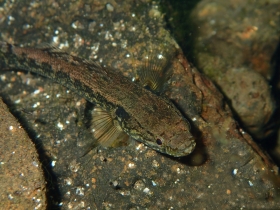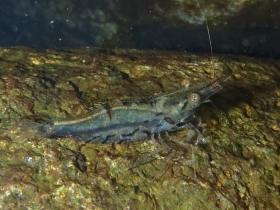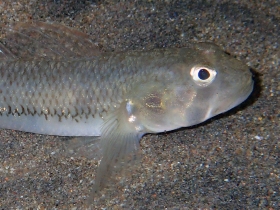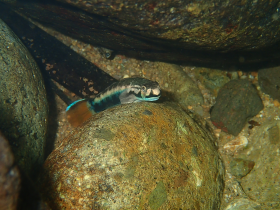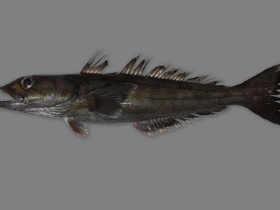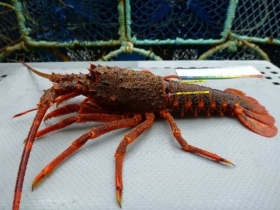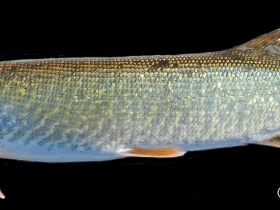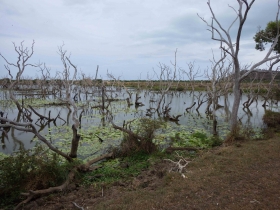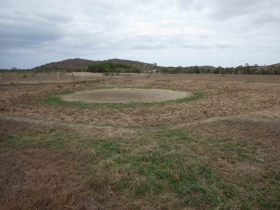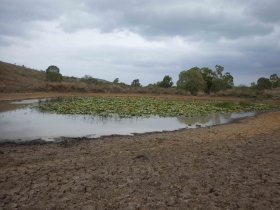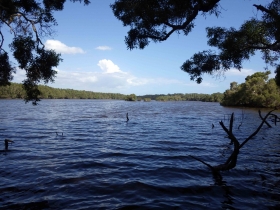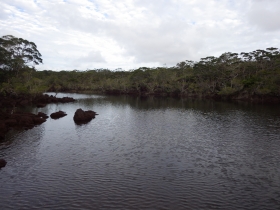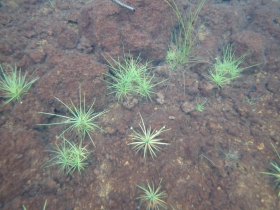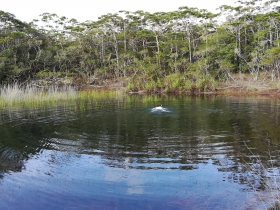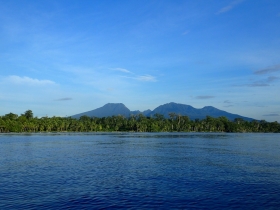BIOPAC - Biodiversity, Plasticity, Adaptation and Conservation
The Knowledge of the mechanisms that regulate the structure, the dynamics, the functioning and the future of the aquatic populations is essential for the development of models and is a prerequisite for proposing management tools for species and habitats of ecological, heritage and/or fisheries interest. It is therefore necessary to study the diversity of these taxonomic groups and their life history traits in order to understand the relationships between the biodiversity and the ecosystem. Our team developed expertise in the study of communities in particular environments such as the southern seas, tropical island systems and temperate coastal and freshwater environments, based on extensive databases and reference collections it has built up. These environments are subject to strong climatic perturbations (cyclonic depressions, frost...), hydraulic (high rainfall, devastating floods, forced marine currents...), hydrodynamic (fronts, tides, retention processes,...) or mechanical (erosion,...) disturbances that lead to a particular adaptation of the organisms that live there, both on the colonization and settlement process and dispersion. In this context, our research is developed in 4 major themes: (i) Description, origin and evolution of biodiversity, (ii) Plasticity and adaptations during development, (iii) Dispersal and migrations, and (iv) Macroecology and conservation.
Description, origin and evolution of biodiversity
Our team is working on the origin of the establishment of current aquatic fauna following post-glacial recolonization and the persistence of refuge areas; the exploration of island biodiversity and assemblage diversity; and the biogeographic study of Southern Ocean diversity at meso- and macro-scale on pelagos and plateaux scale for benthic and demersal organisms.
Plasticity and adaptations during development
Aquatic organisms often have complex life cycles, alternating between planktonic larval life phases and various juvenile and adult life phases. It is often through these larval phases that species are dispersed before adults settle. In this context, the team is studying the diversity and plasticity of shellfish life traits and adaptive responses.
Dispersal and migrations
Our team is studying these migratory aquatic species that have developed specific life traits that allow them to colonize particular environments and or to shift habitats during their life cycle. Dispersal strategies are a key driver of community structure and persistence, ranging from the local scale of a river, island or archipelago to the regional scale. Diadromy, which is a life strategy with migrations between marine and freshwater habitats, is one of the most studied model in our team.
Macroecology and conservation
Our work seeks to (i) describe biodiversity patterns and their dynamics at several spatial scales and levels of organization of living organisms; (ii) link these patterns not only to the processes underlying them, but also to search for direct or indirect forcing drivers such as global or anthropogenic changes; (iii) use this knowledge to produce indicators of status and predictive trends to better guide conservation policies and programs.
Latest scientific articles
2025
-
. 2025. “Coastal To Riverine Entry Timing During The Spawning Migration Of The European Shads (Alosa Spp.): Drivers And Phenological Trends For The French Atlantic Coast Populations”. Aquatic Conservation: Marine And Freshwater Ecosystems 35 (4). doi:10.1002/aqc.v35.410.1002/aqc.70124. https://onlinelibrary.wiley.com/doi/10.1002/aqc.70124.
-
. 2025. “The Scaly Notothen Trematomus Loennbergii A New Host, And The Ross Sea, Antarctica, A New Locality For Dermal X‑Cell Parasites Notoxcellia Spp.”. Polar Biology 48 (2). doi:10.1007/s00300-025-03379-5. https://link.springer.com/article/10.1007/s00300-025-03379-5#citeascontent/pd.
-
. 2025. “Biotime 2.0: Expanding And Improving A Database Of Biodiversity Time Seriesabstractmotivationmain Types Of Variables Includedspatial Location And Graintime Period And Grainmajor Taxa And Level Of Measurementsoftware Format”. Global Ecology And Biogeography 34 (5). doi:10.1111/geb.v34.510.1111/geb.70003. https://onlinelibrary.wiley.com/doi/10.1111/geb.70003.
-
. 2025. “Condition Assessment And Best-Practice Handling Guidelines For Skate (Rajiformes) Bycatch: Lessons From Demersal Longline Fisheries In The Southern Indian Ocean”. Fisheries Research 285: 107357. doi:10.1016/j.fishres.2025.107357. https://www.sciencedirect.com/science/article/pii/S0165783625000943.
-
. 2025. “Migratory Connectivity And Non‐Breeding Habitat Segregation Across Biogeographical Scales In Closely Related Seabird Taxa”. Diversity And Distributions 31 (3). doi:10.1111/ddi.v31.310.1111/ddi.70013. https://onlinelibrary.wiley.com/toc/14724642/31/3.
-
. 2025. “Estuarine Lateral Ecotones Shape Taxonomic And Functional Structure Of Fish Assemblages. The Case Of The Seine Estuary, France”. Estuarine, Coastal And Shelf Science 313: 109066. doi:10.1016/j.ecss.2024.109066. https://www.sciencedirect.com/science/article/abs/pii/S0272771424004542?via%3Dihub.
-
. 2025. “Effectiveness Of An Electrical Barrier To Improve Silver Eel (Abstract”. River Research And Applications. doi:10.1002/rra.4425. https://onlinelibrary.wiley.com/doi/10.1002/rra.4425.
-
. 2025. “Fish And Macro-Crustacean Assemblages Are Relevant Ecological Indicators For Monitoring Rivers Of Tropical Islands”. Ecological Indicators 175: 113585. doi:10.1016/j.ecolind.2025.113585. https://www.sciencedirect.com/science/article/pii/S1470160X25005151?via%3Dihub.
2024
-
. 2024. “Behavioural Heterogeneity Across Killer Whale Social Units In Their Response To Feeding Opportunities From Fisheries”. Ecology And Evolution 14 (5). doi:10.1002/ece3.v14.510.1002/ece3.11448. https://onlinelibrary.wiley.com/toc/20457758/14/5https://onlinelibrary.wiley.com/doi/10.1002/ece3.11448https://onlinelibrary.wiley.com/doi/pdf/10.1002/ece3.11448.
-
. 2024. “Shark Critical Life Stage Vulnerability To Monthly Temperature Variations Under Climate Change”. Marine Environmental Research 198: 106531. doi:10.1016/j.marenvres.2024.106531.



